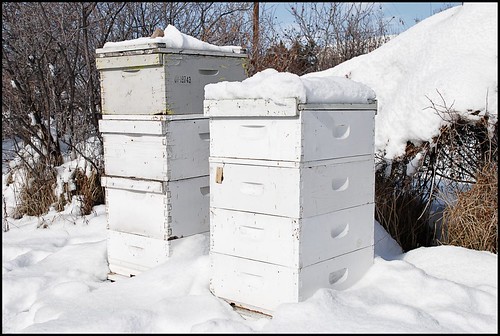Everyone can help the honeybees. Here are some ideas:
1. Plant a "bee friendly garden"
Ask your parents about planting some wildflowers or native plants. Honeybees visit flowers to get nectar and pollen, why not provide some of their favorites?
Here's a list of some plants that honeybees will visit in your backyard. It's also very important that you not spray pesticides (especially insecticides- chemicals that kill insects) when the bees are around.
2. Buy local honey
There are beekeepers in all 50 states that take care of honeybees; for some of them, keeping bees is their full-time job. We depend on beekeepers, so buying honey directly from them helps keep honeybees in your area. Honeylocator.com has a listing of honey sources by region, look at farmers' markets, or find a beekeeper through a state beekeeping association. Try cooking with helpful and wholesome honey!
3. Learn more about honeybees- and tell your friends about them!
Honeybees are important to our lives, but many children (and adults) don't like them because they sting. Wow people with your knowldege (start with Bee in the Know trivia)and tell people about how about 1/3 of our food supply depends on honeybees!
If you have the beekeeping project in 4-H in your county, try making a poster or work with a beekeeper in your area. Visit your county extension office to find out more.
Become a bee buddy! This program, offered through the Kids and Bees program, provides you with a membership packet and birthday surprise. Click here for more information.
Write about it! You could win $250 in the 4-H Beekeeping Essay contest from the Foundation for the Preservation of Honeybees. The topic for 2011 is
"U.S. Honey: A Taste for Every Preference"







































1 cup fresh, ripe nectarines, pineapple, or strawberries, chopped